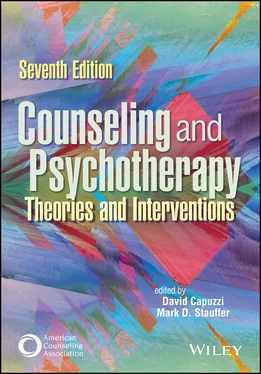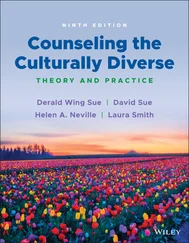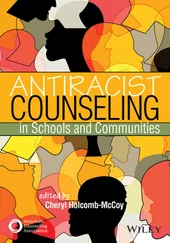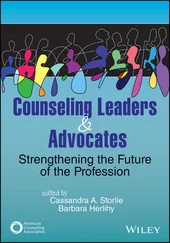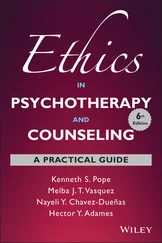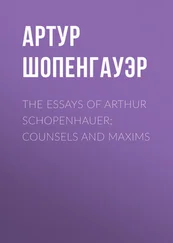Counseling and Psychotherapy
Здесь есть возможность читать онлайн «Counseling and Psychotherapy» — ознакомительный отрывок электронной книги совершенно бесплатно, а после прочтения отрывка купить полную версию. В некоторых случаях можно слушать аудио, скачать через торрент в формате fb2 и присутствует краткое содержание. Жанр: unrecognised, на английском языке. Описание произведения, (предисловие) а так же отзывы посетителей доступны на портале библиотеки ЛибКат.
- Название:Counseling and Psychotherapy
- Автор:
- Жанр:
- Год:неизвестен
- ISBN:нет данных
- Рейтинг книги:4 / 5. Голосов: 1
-
Избранное:Добавить в избранное
- Отзывы:
-
Ваша оценка:
- 80
- 1
- 2
- 3
- 4
- 5
Counseling and Psychotherapy: краткое содержание, описание и аннотация
Предлагаем к чтению аннотацию, описание, краткое содержание или предисловие (зависит от того, что написал сам автор книги «Counseling and Psychotherapy»). Если вы не нашли необходимую информацию о книге — напишите в комментариях, мы постараемся отыскать её.
Counseling and Psychotherapy — читать онлайн ознакомительный отрывок
Ниже представлен текст книги, разбитый по страницам. Система сохранения места последней прочитанной страницы, позволяет с удобством читать онлайн бесплатно книгу «Counseling and Psychotherapy», без необходимости каждый раз заново искать на чём Вы остановились. Поставьте закладку, и сможете в любой момент перейти на страницу, на которой закончили чтение.
Интервал:
Закладка:
HELPING RELATIONSHIPS: STAGES
The helping relationship is a constant throughout the counseling or psychothera-peutic process. The definitive characteristics we have already discussed indicate that the relationship must be present from the initial meeting between the client and the counselor or therapist and continue through closure. Viewing the helping relationship as a constant throughout the helping process leads to visualizing this process from a developmental perspective. This development can best be viewed in terms of a narrow path whose limits are established by the client’s fear, anxiety, and resistance. Such client reactions should not be seen as lack of commitment to change; rather, they need to be understood in terms of the unknown nature of this developing alliance and the fact that this may be the first time the client has experienced this type of interaction. These reactions are often shared by the counselor or therapist based on their level of experience. The path broadens through the development of trust, safety, and understanding as the relationship develops. The once narrow path becomes a boulevard along which two persons move courageously toward their final destination—change. The movement along this broadening path is described by various authors in terms of stages or phases. Osipow et al. (1980), in discussing the stages of the helping relationship, stated,
Persons who experience the process of personal counseling seem to progress through several stages. First, there is an increased awareness of self and others. Second, there is an expanded exploration of self and environment (positive and negative behavioral tendencies). Third, there is increased commitment to self-enhancing behavior and its implementation. Fourth, there is an internalization of new and more productive thoughts and actions. Fifth, there is a stabilization of new behavior. (p. 73)
Egan (2013) stated that the helping relationship can be broken down into a minimum of three phases: building the relationship, challenging the client to find ways to change, and facilitating positive client action. The goal in the first phase is to build a foundation of mutual trust and client understanding. In the second phase, the counselor challenges the client to try on new ways of thinking, feeling, and behaving. In the third phase, the counselor aids the client in facilitating actions that lead to change and growth in the client’s life outside the counseling relationship.
Stages are connected to pantheoretical helping skills that counselors-in-training practice. These skills should be tied to theory, case conceptualization, and multicultural and social justice competencies and cultural humility. For example, in Hill et al.’s (2014) pantheoretical three-stage model, counseling students learn skills such as reflection of feeling to build relationship and share their narratives in stages. In Stage 1 (exploration), they learn skills to establish the therapeutic working relationship; in Stage 2 (insight), they learn skills such as immediacy to facilitate client discovery of new understandings and interpretations; and in Stage 3 (action), they learn skills to help clients in the active process of making meaningful change.
Corey and Corey (2021), Gladding (2018), and Egan (2013) provided other models of the developmental nature of the stages of helping relationships. Although the terms used to describe these stages may differ, there seems to be a consistency across these models: The stages move from initiation of the relationship through a clinically based working stage to a termination stage. The following developmental stages show our conceptualization of this relationship-building process and are based on the consistency found in our research and our clinical experience:
Stage 1: Relationship development. This stage includes the initial meeting of the client and counselor or therapist, rapport building, information gathering, goal determination, and informing the client about the conditions under which counseling will take place (e.g., confidentiality, taping, counselor/ therapist and client roles).
Stage 2: Extended exploration. This stage builds on the foundation established in the first stage. Through selected techniques, theoretical approaches, and strategies, the counselor or therapist explores in depth the emotional and cognitive dynamics of the client, problem parameters, previously tried solutions, and decision-making capabilities of the client. There is also a reevaluation of the goals determined in Stage 1.
Stage 3: Problem resolution. This stage, which depends on information gained during the previous two stages, is characterized by increased activity for all parties involved. The counselor’s or therapist’s activities include facilitating, demonstrating, instructing, and providing a safe environment for the development of change. The client’s activities focus on reevaluation, emotional and cognitive dynamics, trying out new behaviors (both inside and outside of the sessions), and discarding those behaviors that do not meet goals.
Stage 4: Termination and follow-up. This stage is the closing stage of the helping relationship and is mutually determined by all persons involved. Methods and procedures for follow-up are determined prior to the last meeting (see Sidebar 1.2).
Sidebar 1.2 Client Transparency
In the first stage of a helping relationship, the client may not be entirely forthcoming about what they really want to address. Often this is because the client needs time to feel safe and comfortable with the counselor or therapist. However, some clients will move very quickly to the core of the issue or concern. Neither possibility should be a surprise to the counselor or therapist.
It is important to keep in mind that people do not automatically move through these identified stages in a lockstep manner. The relationship may end at any one of these stages based on decisions made by the client, the counselor or therapist, or both. Lack of counselor preparation and education may also disrupt this cycle. For example, in one study, lesbian and gay clients who terminated counseling prematurely reported problems related to microaggression, shaming, lack of normalizing, lack of knowledge, and imposing heteronormative values (Van Meter, 2019). As far as stages are concerned, it is not possible to identify the amount of time that should be devoted to any particular stage. Sapiro (2020) discussed how marginalized adolescent clients are reluctant to trust and disclose in counseling settings. Joo et al. (2019) recommended that Korean clients may need more time on Hill’s (2014) exploration stage and less on the insight stage. Moreover, cultural variations may call for stages and stage-related helping skills to be moderated.
Viewing the helping relationship as an ongoing process that is composed of developmental stages provides counselors and therapists with a structural framework within which they can function effectively. Inside this framework fit the core conditions and strategies that serve the goals of movement through the relationship process and enhancement and encouragement of client change. We discuss these core conditions and strategies in the following two sections.
HELPING RELATIONSHIPS: CORE CONDITIONS
The concept of basic or core conditions related to the helping relationship has its basis in the early work of Rogers (1957) and the continued works of authors such as Carkhuff and Barenson (1967), Combs (1986), Egan (2013), Hill et al. (2014, 2020), and Truax and Carkhuff (1967). Their works pursued a question, “What are the core conditions and basic skills that exist in the best of therapeutic relationships?” From a biological perspective, what has been discovered in the last few decades is that the identified core conditions, such as empathy, have neurobiological correlates (Coutinho et al., 2014). For example, “mirror” neuron mechanisms, or neurobiological social learning “copy processes,” help individuals produce and perceive facial emotional expressions vital to empathy (Krautheim et al., 2019). Basically, humans are prosocially gifted, and counselors are taking advantage of and enhancing, if not mastering, this. Core conditions are the result of more than neurobiology as they are mediated by lived experiences, personality traits, culture, or some combination of these. It should be obvious that the concept of core or basic conditions relates directly to various personal characteristics, capacities, or behaviors that the counselor or therapist brings to and incorporates into the helping relationship (see Sidebar 1.3).
Читать дальшеИнтервал:
Закладка:
Похожие книги на «Counseling and Psychotherapy»
Представляем Вашему вниманию похожие книги на «Counseling and Psychotherapy» списком для выбора. Мы отобрали схожую по названию и смыслу литературу в надежде предоставить читателям больше вариантов отыскать новые, интересные, ещё непрочитанные произведения.
Обсуждение, отзывы о книге «Counseling and Psychotherapy» и просто собственные мнения читателей. Оставьте ваши комментарии, напишите, что Вы думаете о произведении, его смысле или главных героях. Укажите что конкретно понравилось, а что нет, и почему Вы так считаете.
